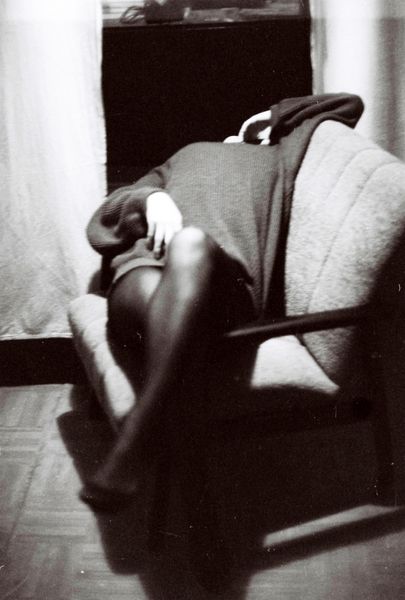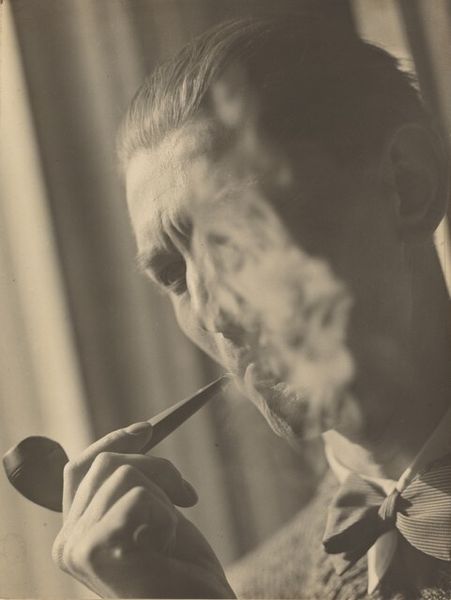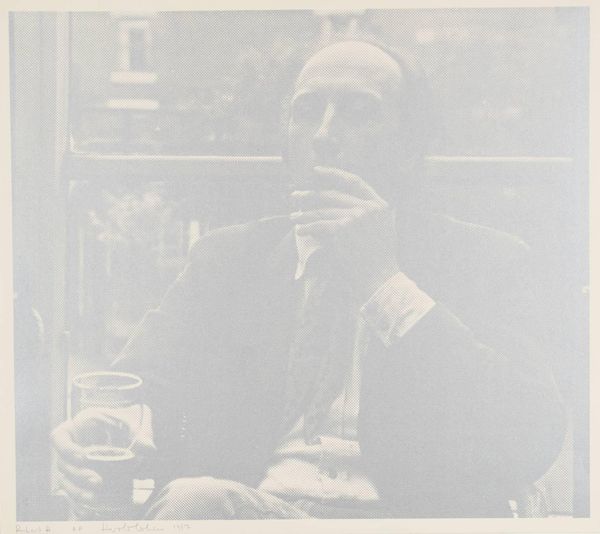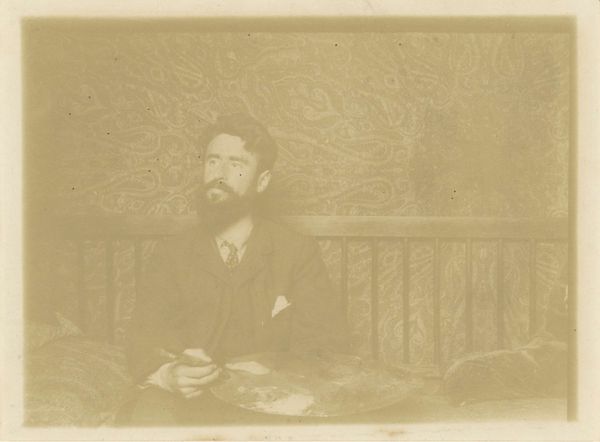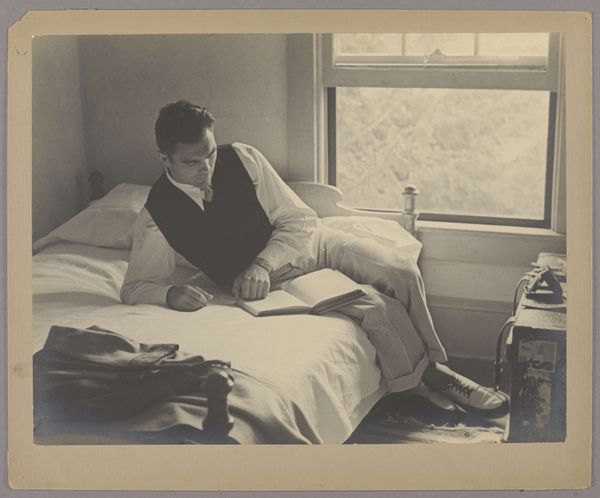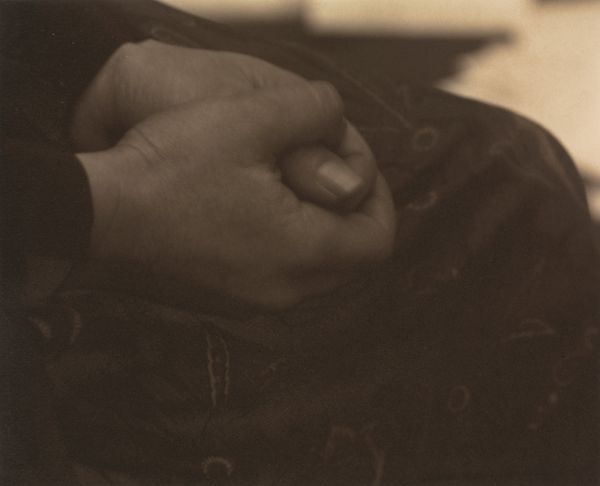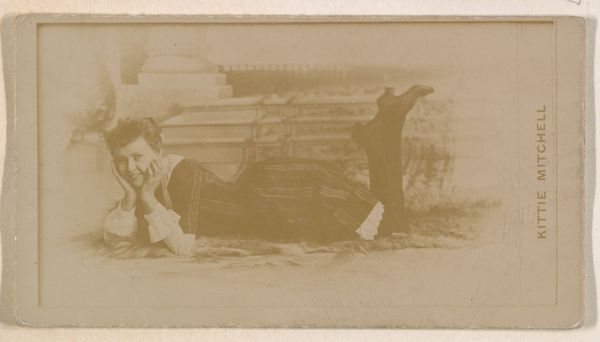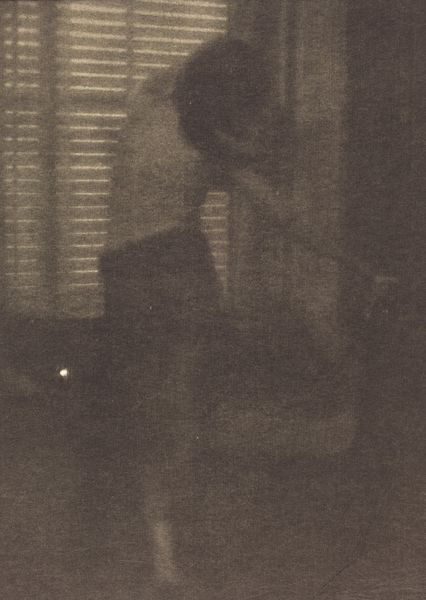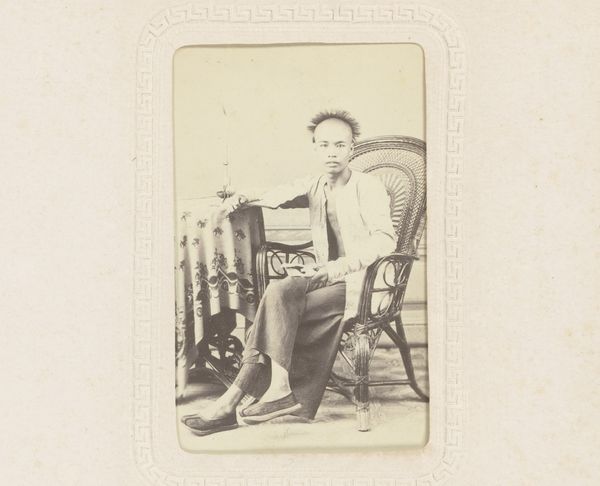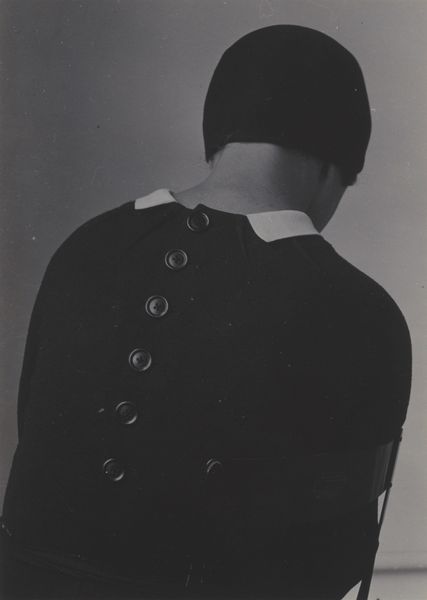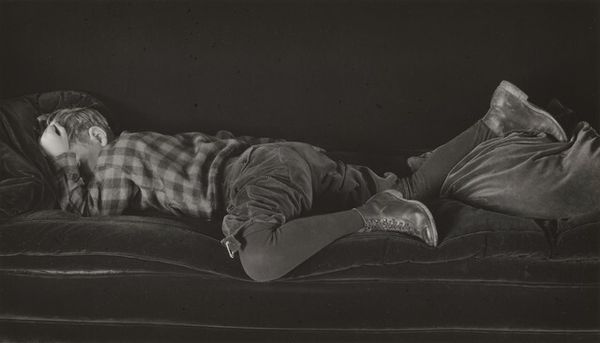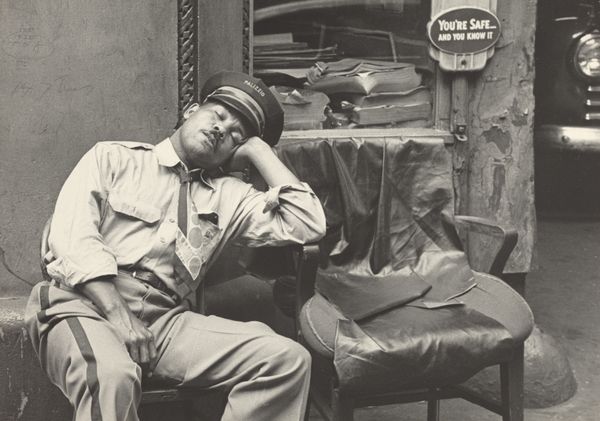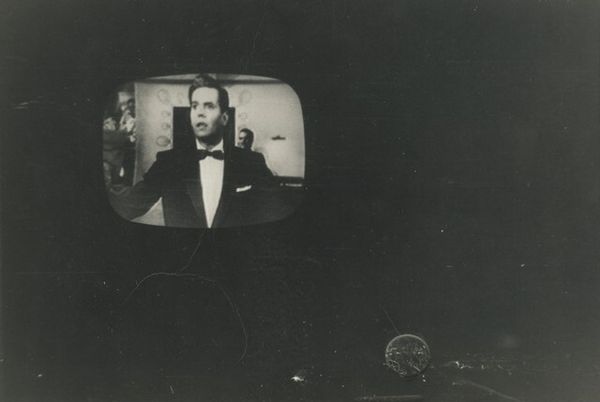
photography
#
portrait
#
black and white photography
#
pictorialism
#
photography
#
black and white
#
monochrome photography
#
monochrome
#
monochrome
Dimensions: sheet (trimmed to image): 18.5 x 24.3 cm (7 5/16 x 9 9/16 in.)
Copyright: National Gallery of Art: CC0 1.0
Curator: Here we have Alfred Stieglitz’s portrait of "Arthur B. Carles" taken in 1912, a photographic print rendered in monochrome. It seems to capture Carles in a state of repose. What’s your first take on it? Editor: An air of faded grandeur. There's almost a whisper to this image, like a memory fading at the edges. It makes me wonder what he’s pondering as he sits, feet up, smoking a pipe. Curator: Right. It's key to consider the Pictorialist style Stieglitz was instrumental in championing. The manipulation of the photographic process to mimic painting. This image feels crafted as much as captured. Consider the deliberate blurring and tonal range – soft focus to enhance mood. It was, in effect, attempting to legitimize photography as a "high art." Editor: You know, that manipulation is part of what draws me in. The image, slightly out of focus, it feels less like documentation and more like a painted dream. Look at the way he holds the pipe; his posture! There's a definite intent to portray Carles as intellectual and artistic. It goes beyond simple documentation. Curator: Absolutely. Think of Stieglitz as someone intensely involved with modern art movements from Europe and in the US. By making these artistic and aesthetic choices he emphasizes the creative labor. His approach challenged conventions regarding what photography should do—it should convey something that painting couldn’t. Editor: I agree! And I can’t help but find it a little comical, too. Is he deliberately posing, or is this a genuine candid moment of relaxed genius? It toes that interesting line, doesn't it, between contrived artifice and authentic intimacy? It tickles me. Curator: Definitely. One can observe that the material production – the making of the print – underscores a desire for status. Stieglitz, though photographing Carles, creates his own vision of the man, shaped by aesthetic choices of a period. It underscores an elevated role for the artist, photographer, above documentarian. Editor: Yes! Well, whether genuine or constructed, intimate or performative, it certainly invites a narrative, a sense of connection across time and media. It sparks my interest in the subjects, what might have drawn these figures together to begin with, artist to artist. Curator: The image is, after all, not merely an art object, but a form of cultural capital. A way of asserting aesthetic and social position, both for Stieglitz and Carles in this depiction. A social performance inscribed on photographic paper. Editor: And now I’m wondering if he always wore those shiny shoes! The mind wanders, doesn't it? Wonderful how much thought is prompted by such a still and subtle photograph. Curator: Precisely! Thinking about the social conditions allows us insight into the aesthetic ambitions and period culture.
Comments
No comments
Be the first to comment and join the conversation on the ultimate creative platform.
